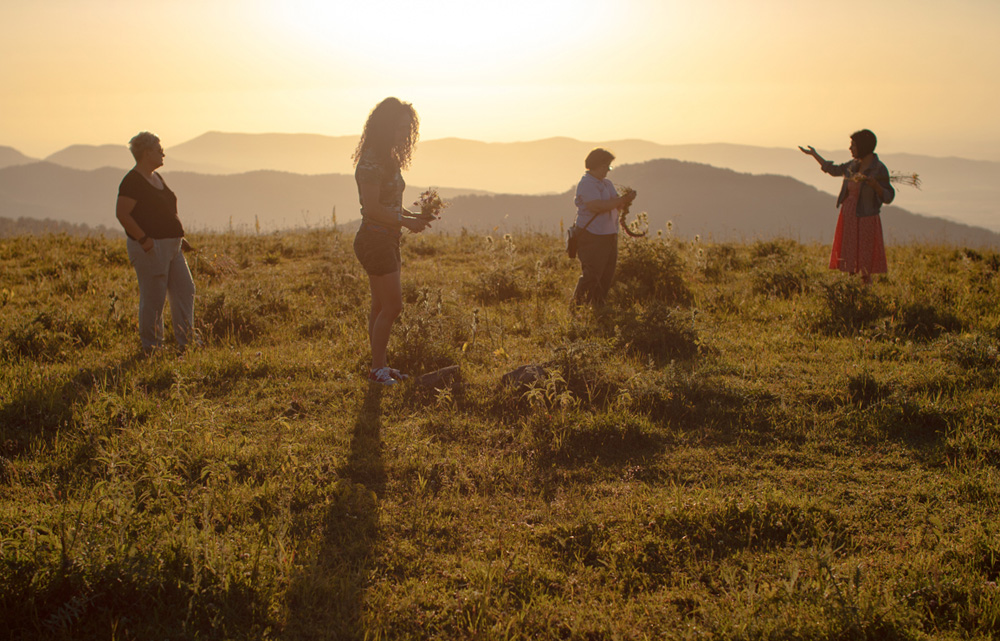In “There Was, There Was Not,” Sose can be seen showing off her impressive collection of medals as a judo champion, once earning a second place in all of Europe, which is not easily done from anywhere but particularly her homeland of Artsakh. Her brawn is unquestionable, but she immediately shows her soft side when director Emily Mkrtichian asks her about the equally impressive stuffed animal collection underneath on her bed, with Sose telling the filmmaker that she thinks she has so many because she was prevented from having them during the war.
If not for the occasional interstitials throughout “There Was, There Was Not,” you could wonder which war Sose is referring to when the republic has been a source of constant push-and-pull between neighboring Armenia and Azerbaijan for decades, never officially recognized as a country and heavily contested since the end of the Cold War and subject to a particularly brutal conflict in the early 1990s. A cease fire largely prevented Azerbaijan from attacking the predominantly indigenous Armenian region again after a cease fire was reached, but immediately before 2020 when the Second Nagorno-Karabakh War broke out, Mkrtichian finds four women trying to build something amidst the instability that still exists from the previous war. While the director can be heard explaining the title in the opening scene, an allusion to how stories often begin in Artsakh, one does well to keep an eye on the seemingly mundane image that accompanies it, preparing coffee the local way — on a stove, in an individual serving of the notoriously strong dark roast that one has to have skill to prepare properly when it’s only ready shortly before it boils over for a full-bodied experience that comes to resemble the subjects she introduces.
You start to realize that the early beauty to be found in “There Was, There Was Not,” shot in sun-dappled mountains where life seems quiet and idyllic, is partly natural but also the product of protection of people who have found the strength to endure and in the quartet Mkrtichian follows, there are those who dare to improve things. There’s Siranush, a city council candidate in a place where few women even attempt to make it onto the ballot, Gayane, whose dream of constructing a women’s center in the area has already started with gathering all the women she can with various activities, Sosé, who not only practices judo, but teaches it to kids, and Sveta, a single mother who has pushed away any feeling amongst her children of a tragic past so they can enjoy the present without the painful memories her generation has.
Even though they know it can all change in an instant, Mkrtichian conveys that reality vividly when Azerbaijan forces begin to move in on Stepanakert, the capital of Artsakh, and the director limits any presentation of violence into a single moment of disarray and shelling. (As Sosé’s hairdresser says, “It’s the sound of sirens that’s scarier than the bomb.”) The fallout instead is seen in more unexpected ways, with Sveta’s calls to her children unreturned, leaving her to desperately wonder why they aren’t answering, and Sosé, who goes to fight for her people on the front lines, returning not to train kids for self-defense in judo, but how to properly assemble a rifle. Rather than scenes of bombed out buildings, the film surfaces the usually invisible destruction of a culture in real time as the women put aside any hopes they had to simply survive and the bifurcated structure of the film, shrewdly designed by Mkrtichian and co-editor Alexandria Bombach (“On Her Shoulders”), doesn’t suggest a before and after so much as an ongoing test of resilience that ebbs and flows as the situation calls for it.
Eventually, it isn’t only the resolve of the women that’s envisioned as being tested, but to what impact stories can have when as Mkrtichian recalls her own knowledge of past strife in the region could often come from apocryphal tales when her grandparents had to flee for safety and even as she collects undeniable evidence now of the devastation, what will it mean when the republic itself has disappeared. She resoundingly answers her own question when “There Was, There Was Not” holds such power beyond the fact of capturing Artsakh’s very existence, an indelible portrait of its citizens whose spirit was as responsible for a sense of place as much as the land beneath their feet and while memories of what was could fade, the way it is talked about will continue to bring it to life.
“There Was, There Was Not” will screen again at True/False on March 1st at 10:45 am at the Globe and March 3rd at 3 pm at the Willy Wilson at the Ragtag.




